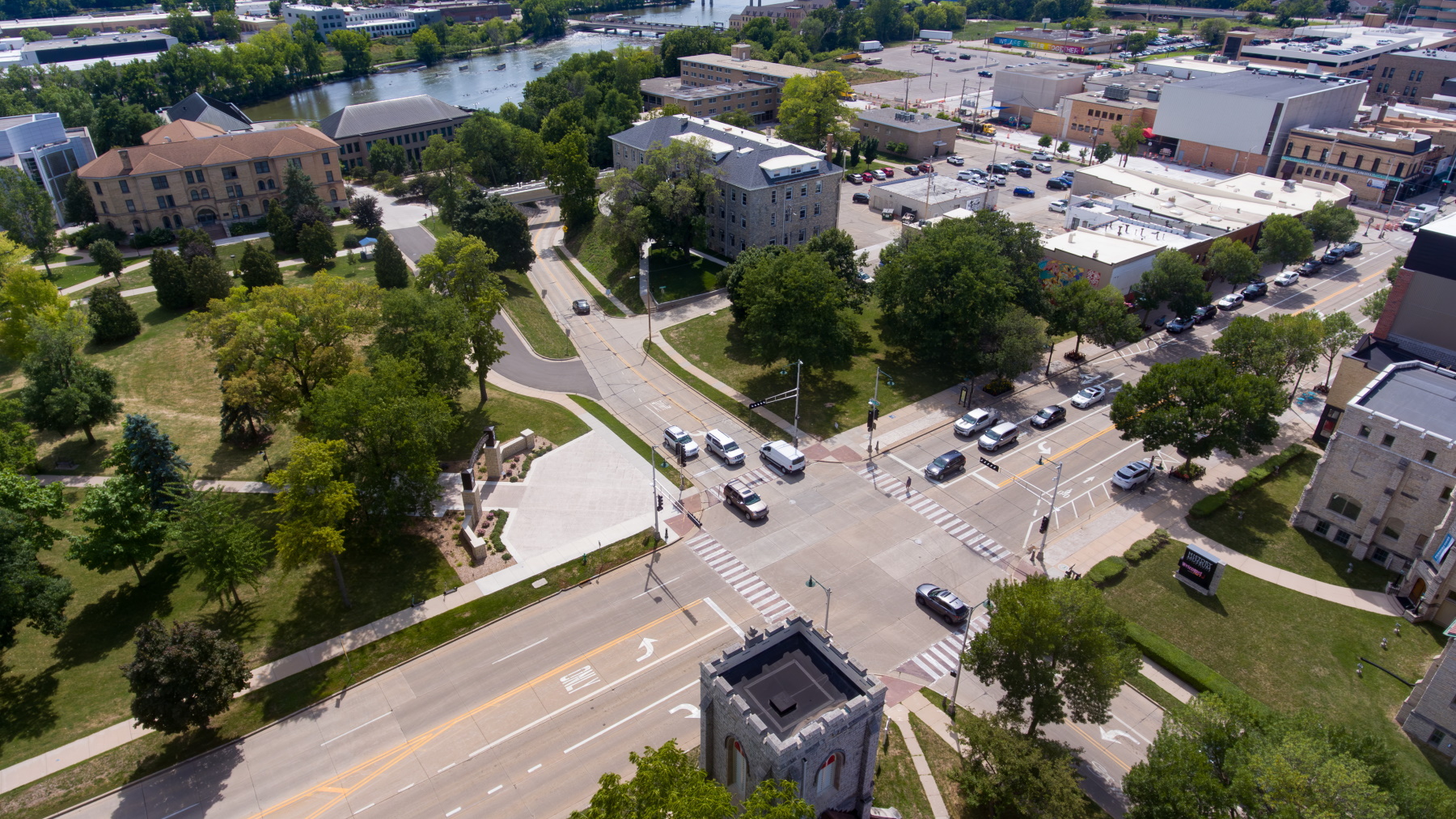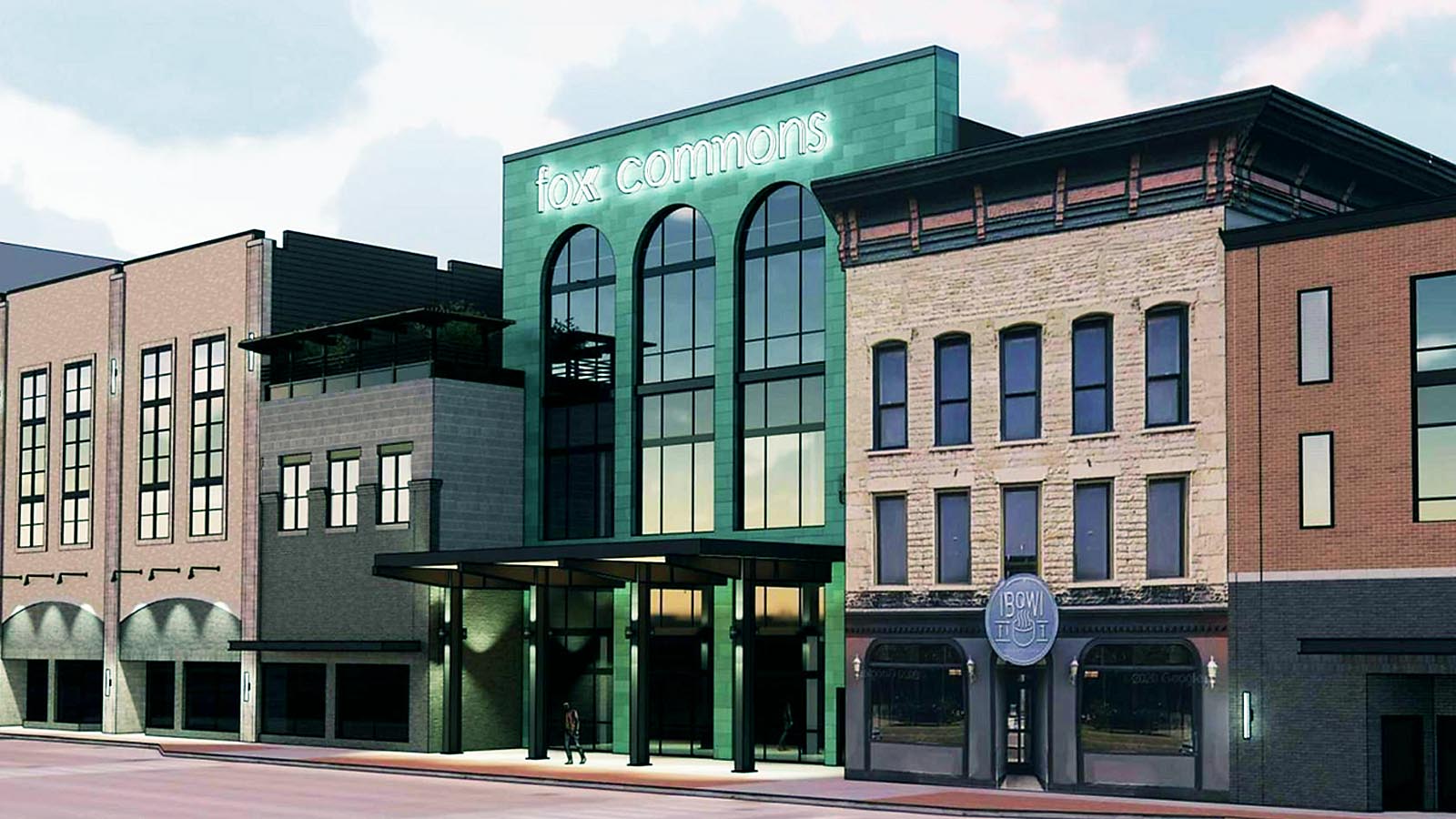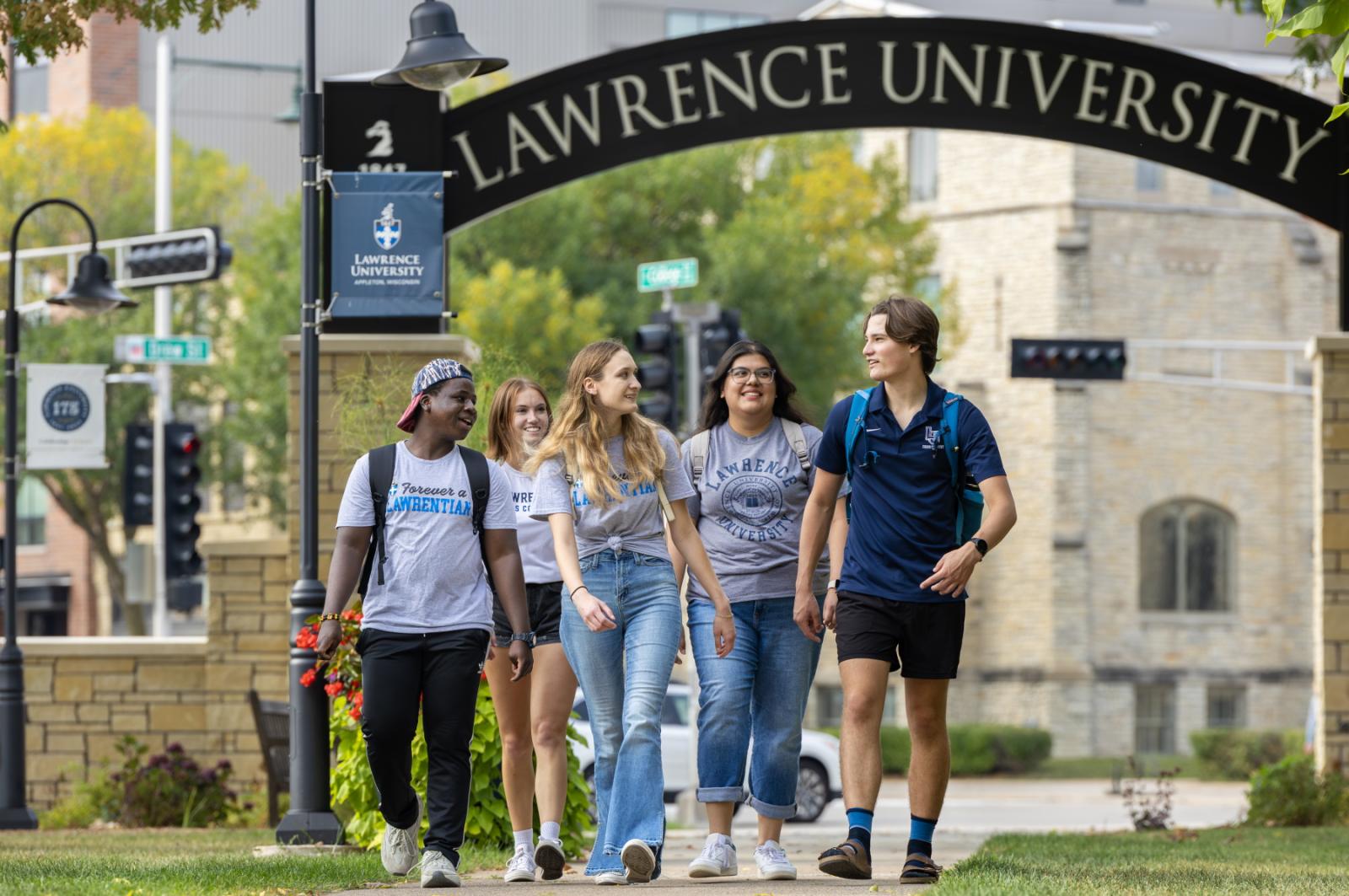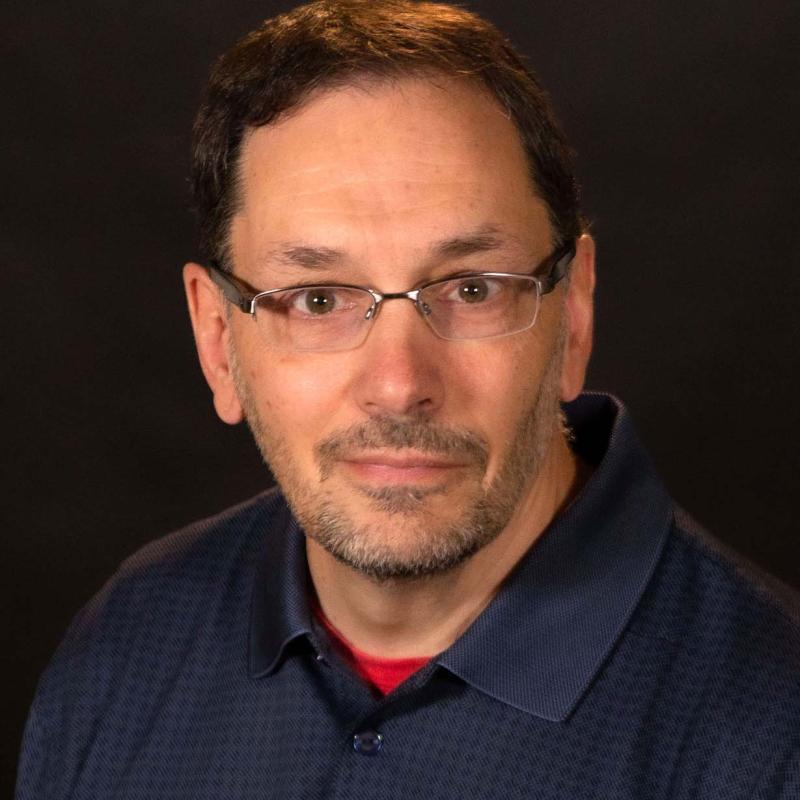Two major developments launched this summer by Lawrence University—both in public-private partnerships—will strengthen academic programs and enhance career discernment for students across campus.
The Fox Commons development, to house nearly 180 Lawrence students in modern living-learning communities, is expected to open by fall of 2024 in the heart of Appleton’s downtown; and the new four-story mixed-use building at 315 E. College Avenue, in partnership with Trout Museum of Art, is expected to open a year later, transforming the western edge of campus. Both will bring new academic opportunities and create paths to career-focused collaborations woven through multiple disciplines.
“These projects speak to the future. Our faculty and students will have state-of-the-art teaching and learning spaces, our students will have modern living environments, they’ll have partners who can connect them with careers."
President Laurie A. Carter
Excitement for what this will bring to Lawrence students—in conjunction with other strategic investments—is building on and off campus.
“The student experience includes what happens inside the classroom as well as outside the classroom,” President Laurie A. Carter said. “These projects speak to the future. Our faculty and students will have state-of-the-art teaching and learning spaces, our students will have modern living environments, they’ll have partners who can connect them with careers. And all of this will be done within the context of a deepening relationship with the community.”
The new housing options and built-in learning, collaborating, and mentoring spaces is a powerful combination that adds important layers to the student experience as Lawrence strengthens its draw in an increasingly competitive higher education environment. As the enrollment cliff arrives—a reference to the dramatic drop in the number of high school graduates nationwide set to peak between 2025 and 2029—it is paramount that Lawrence positions itself to attract the best and brightest students while continuing to lean into the lifelong benefits of a liberal arts education, Carter said. That means embracing the university’s 176-year history and its commitment to the liberal arts while evolving the student experience to meet the needs of today’s students—needs that are different than those of past generations.
“We’re looking at what today’s students need from us as they’re coming through this post-pandemic world,” Carter said.
The draw of these projects comes not in the buildings themselves but in what those new spaces bring to Lawrence’s students and faculty—stronger academic programming in areas ranging from the arts and humanities to pre-health and business and entrepreneurship, state-of-the-art teaching tools, and built-in mentorship opportunities aimed at building life-after-Lawrence career paths.
Peter Blitstein, provost and dean of the faculty, has been holding planning sessions with faculty on what academic investments within Fox Commons and 315 E. College Avenue might look like.
“It’s really exciting to have opportunities to plan new academic programming, new academic spaces that are designed to take Lawrence’s tradition of the liberal arts and sciences, and the fine arts and music, and really move it forward in ways that benefit contemporary students,” Blitstein said.
Lawrence’s partners in the community share the excitement. They point to deepening relationships as Lawrence students both live downtown and collaborate with other downtown tenants. Jennifer Stephany, executive director of Appleton Downtown Inc. (ADI), a nonprofit community coalition that supports an economically strong and vibrant downtown, believes there will be far-reaching benefits that come with those deeper interactions.
“There is this wave of diversity, culture, creativity, energy that comes from the campus that we’re hoping to further embrace to really make us stronger both as a destination and a neighborhood,” Stephany said.
Bolstering the student experience
Lawrence leadership has been actively building on the student experience. That includes new and enhanced academic programs, a stronger and more engaged Career Center, additional support staff in Student Life, new investments in Athletics—nearly a quarter of Lawrence’s students are student-athletes—and now new opportunities in academics, residential life, and community partnerships.
In addition to the partnerships with Trout and Fox Commons, the university has in the past year:
- Introduced a new business and entrepreneurship major, built through the lens of the liberal arts.
- Added dance as a new minor in the Conservatory.
- Introduced the Lawrence Advantage to improve accessibility to a Lawrence education for all academically qualified students from Wisconsin and Illinois.
- Strengthened the first-year experience.
- Built a new outdoor track and field complex at Whiting Field and a new locker room facility at Banta Bowl, both scheduled to be completed this fall.
- Announced plans to fund-raise for the building of a new recreation center adjacent to Alexander Gym. The recreation center, open to all students, would include fitness spaces and indoor competition and/or training facilities for track, baseball, softball, tennis, and more. More details are expected to be released soon.
The strategic initiatives, supported by the Board of Trustees, puts a focus on enhancing the student experience across academics, student life, career exploration, and athletics.
Partnering with Trout Museum of Art

The new building at 315 E. College Avenue will be Lawrence’s first new major building project since construction of Warch Campus Center in 2009. Using public-private partnership (P3) financing, it will feature about 30,000 square feet of space on each of the four floors. Architectural renderings are expected to be released soon.
The nonprofit art museum will be on the first floor, with state-of-the-art academic spaces for Lawrence on the second floor, and Lawrence-owned market-rate apartments on the upper two floors. It will be built by Boldt and jointly owned by Lawrence and Trout, with Lawrence controlling the upper three floors and Trout the ground floor.
Trout Museum of Art will relocate from its current home at 111 W. College Avenue.
“Seeing two great institutions come together to provide innovative and exciting new educational, cultural, and community programming is a win for Appletonians and people across the Fox Cities,” Appleton Mayor Jake Woodford ’13 said when the project was announced.
“I see a lot of potential for emphasizing the Conservatory, the humanities, different intersectional programs such as environmental studies and ethnic studies.”
Anders Hanhan, Lawrence University senior
The museum will house major art exhibitions—more extensive than is possible in its current location—while providing modern spaces for art classes and other public events.
“What it brings to the humanities is going to be a game-changer for our students,” Chris Clarke, Lawrence’s vice president for student life, said of the partnership with Trout. “When you talk about experiential learning, it will be right here on the corner of campus.”
Lawrence’s academic space on the second floor will include faculty offices and studios and an innovative teaching and co-curricular commons, where students will engage in both formal and experiential learning in varying disciplines, including mathematics, computer science, data science, and music. And it will be home to the Humanities Hub at Lawrence – an intellectual collaborative for faculty, students, and scholars-in-residence.
Lawrence senior Anders Hanhan said he loves the investment in the arts and humanities and the expected collaborations with Trout.
“I see a lot of potential for emphasizing the Conservatory, the humanities, different intersectional programs such as environmental studies and ethnic studies,” Hanhan said. “It puts an emphasis on some of the programs that are really driving students to come here.”
The upper two floors will be market-rate apartments available for rent. Should Lawrence’s enrollment grow in future years, some of that space could be converted to student housing, said Samir Datta, vice president for finance and administration. Lawrence and Trout will make payments over the coming 30 years, eventually owning the building outright. Fund-raising efforts could shorten that timeframe.
“The partnership with Trout is really one of the many ways we are leaning into the liberal arts,” Carter said. “There are so many touch points with our student population with a museum—to be able to see that operation run, how they function as a nonprofit.”
Expanding campus with Fox Commons

Fox Commons, meanwhile, gives Lawrence new academic and student life avenues as a living-learning community that blends apartment-style student housing with built-in mentoring partnerships.
The renovation of City Center Plaza into Fox Commons began this summer. Located at 10 E. College Avenue, Fox Commons will be a 180,000-square-foot health care, housing, retail, and mixed-use community hub. It’s a project of Dark Horse Development and Boldt. Besides Lawrence, other prominent tenants include Mosaic Family Health, Prevea Health, and Gener8tor, a business incubator focused on sustainability.
Lawrence juniors and seniors will have the opportunity to live in two-, three-, and four-bedroom apartments on the second and third floors.
Built-in academic spaces, a business and entrepreneurship center, a finance room equipped with Bloomberg terminals, a pre-health commons, and lecture and meeting spaces will be part of the design. Renderings of the apartment and academic spaces are expected to be released soon.
The living-learning spaces will allow for Lawrence students interested in business and entrepreneurship and pre-health careers, for example, to collaborate regularly with professionals from Mosaic, Prevea, Gener8tor, and other nearby finance and business entities.
“I think our students are going to love the living environment, the learning environment, and the growth environment that we’re going to offer them with this partnership,” Clarke said.
Hanhan, an environmental studies and government double major who serves as president of the Lawrence University Community Council (LUCC), said the apartment-style living option is something students have been asking for.
“One thousand percent,” he said of students wanting that option in their junior and senior years. “There are a lot of students who are seeking more independence, and this absolutely does that in a way that Lawrence hasn’t done before.”
“We always hear about the Lawrence bubble. This is not exactly popping the bubble but rather expanding it.”
Addison Littlefield, Lawrence University senior
Senior Addison Littlefield called the Fox Commons option a game-changer for Lawrence because it gives upper-year students who want to explore life outside of residence halls an opportunity to do so while remaining closely connected with campus.
“We always hear about the Lawrence bubble,” she said. “This is not exactly popping the bubble but rather expanding it.”
Business and entrepreneurship and pre-health students aren’t the only ones who will find the living-learning communities a great fit; other majors that are built with an interdisciplinary approach also will fit seamlessly into those communities, Blitstein said.
The design of Fox Commons is intentional in that students will still be part of the campus environment while also having the opportunity to explore what life after Lawrence might look like—personally and professionally.
“We’re not really viewing this as off-campus housing but rather an extension of our campus in a way that allows students to develop those transitional skills while still being very connected to the campus community,” Carter said.
Growing a stronger community
The enthusiasm surrounding these investments is palpable, in part because of the prospect of building a tighter, more connected community in downtown Appleton. That’s not lost on students.
“It helps open up Lawrence to the Appleton community,” Littlefield, a music performance major, said of both the Fox Commons and 315 E. College developments. “I think the living-learning communities provide a great chance for students to interact with businesses downtown, kind of further fostering the Lawrence connections to Appleton.”
“As we’re looking at top talent coming out of Lawrence University, we want to retain those folks in our community. I think this gives us a leg up to do that, to introduce them to how great our community can be and hope they become a part of it early on and want to stay.”
Jennifer Stephany, executive director of Appleton Downtown Inc.
ADI’s Stephany, meanwhile, sees lasting benefits for both Lawrence and the Fox Cities. With students further integrated into the community, there comes a greater investment and awareness of their surroundings. That has immediate benefits for local businesses interacting with those students but also long-term benefits in selling Appleton and the greater Fox Cities as a desirable place to live, learn, and play.
“It really has an opportunity to bring with it this talent traction piece,” Stephany said. “As we’re looking at top talent coming out of Lawrence University, we want to retain those folks in our community. I think this gives us a leg up to do that, to introduce them to how great our community can be and hope they become a part of it early on and want to stay.”
Both the Fox Commons and 315 E. College Avenue developments bolster a partnership with Appleton that has been ongoing.
“It speaks to what Appleton has to offer in terms of culture, education, job opportunities,” Clarke said. “For our students, it’s additional chances to get involved, to find their passion, find opportunities, get ready for life after Lawrence. I think Appleton will benefit from us being more in the community, and I think our students will benefit from these opportunities with our partners.”
Carter calls it an important next step in the campus-community relationship, one that dates to the founding of Lawrence in 1847 and the development of Appleton as a municipality in the years to follow.
“This is an opportunity to deepen that relationship in a very meaningful way,” she said. “It’s about having our students be part of the community in a way that allows them to understand what it means to be good neighbors, to really interact with the College Avenue population a little more deeply, particularly as the downtown becomes more residential. We’re preparing them for life after Lawrence while still providing them with that piece of the Lawrence bubble they’re looking for.”

